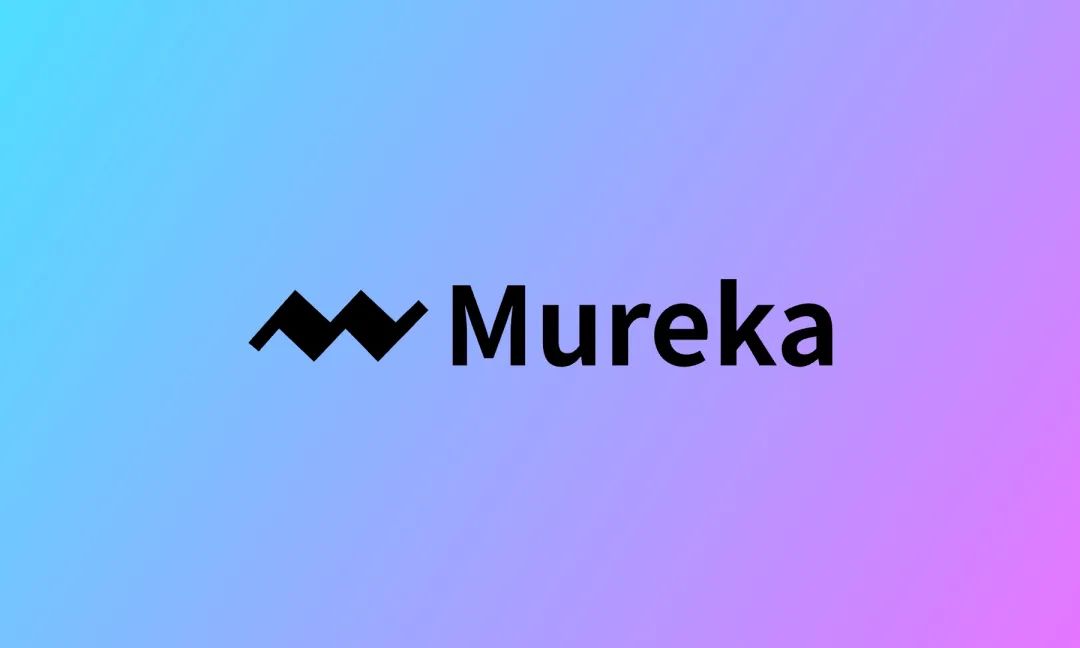 埃隆·马斯克(Elon Musk)表示,他计划很快开始每月向推特(Twitter)/ X平台用户收取少量费用。
埃隆·马斯克(Elon Musk)表示,他计划很快开始每月向推特(Twitter)/ X平台用户收取少量费用。
去年4月,埃隆·马斯克提出以440亿美元收购推特后,他在推特上得意地写道:“我们将打败垃圾邮件机器人,否则死路一条!”
马斯克自己承认,尽管拥有这家被他重新命名为X的公司已经快一年了,但他仍然未取得成功。
因此,他现在有了消除这一祸害的新计划——要求每位X用户支付少量费用以在他的城市广场(即推特)上占据一席之地,从而获得他们的帮助。
周一,马斯克在与内塔尼亚胡的谈话中表示:“我们实际上会推出更低级别的定价——我们希望它只是少量费用……这实际上是抵御庞大垃圾邮件机器人大军的唯一方法。” (此前,以色列总理本雅明·内塔尼亚胡(Benjamin Netanyahu)问马斯克如何才能阻止“垃圾邮件机器人大军”在X上放大仇恨言论。)
完全照搬腾讯微信的攻略
向每位用户收费将为这家陷入财务困境的公司带来急需的新收入。即便在裁员约80%后,这家公司仍在不断消耗现金储备。
然而,更重要的是,向马斯克提供信用卡或借记卡账户详情,这将吸引商家入驻平台(这些商家寻求直接向这位特斯拉首席执行官的客户销售商品和服务)。
此举直接借鉴了微信的做法。微信(WeChat)是腾讯旗下的即时通讯应用,目前在中国人的日常生活中占据主导地位。
2014年1月,在微信开始收集支付详情之后(根据春节习俗,在线上发现金红包,这是微信提供的新服务的一部分),才成为一款超级应用。
商学教授杨晓明(音译)和其他两位同事在《亚洲案例研究期刊》(Asian Case Research Journal)上写道:“这场全国性狂欢背后的真正目的是让微信用户将自己的应用程序与银行账户关联起来——这是收发‘虚拟红包’的先决条件——从而大大增强腾讯未来向微信用户收费的能力。”
短短几年后,由于这一想法,据信全中国一半的人口经常使用移动支付,如今,人们已无法想象一个没有微信的中国。
马斯克经常说,他想创造自己的克隆产品,只是并不局限于一个市场,而是针对全球市场。
虽然他考虑过从零开始创建一个平台,但这位新社交媒体大亨认为,根据他自己的估计,与推特的交易可以让他把自己的计划提前五年。
对推特进行品牌重塑是这一计划的关键因素。除了众所周知的对字母“X”的痴迷之外,这位世界首富还认为用户将推特与发送不超过140个字符的微博客联系得过于紧密,因此可能不会将其视为一个可以处理其他日常事务的平台。
马斯克在7月底解释说:“在未来的几个月里,我们将增加综合通信功能,以及处理各类金融业务的功能。在这种情况下,推特这一名字就没有意义了,所以我们必须告别这只蓝鸟。”
垃圾邮件机器人是个问题?
事实上,向包月服务的转变与其说是为了解决垃圾邮件机器人问题,不如说是为了向支付领域转变。
对于普通的推特用户来说,垃圾邮件机器人并不是什么大问题。马斯克声称,目前推特用户数量为5.5亿,是去年公布数据的两倍多(当时推特还是一家上市公司,必须公布审计结果)。
如果有什么问题的话,垃圾邮件机器人主要伤害的是广告商,他们无法知道自己的广告触及了多少真实的消费者。但在60%的美国广告客户终止了与X的合作后,这个问题就变得无足轻重了。
在这种情况下,让其他人为垃圾邮件机器人账户买单似乎并不是一个有效的策略,因为这些账户在很大程度上并不会直接给他们造成不便。
但这将是马斯克实现其创建一款“全能应用”的雄心的必要步骤。尤其是据估计,即使在他开始分享部分广告收入之后,只有不到100万用户使用每月8美元的高级订阅服务。(财富中文网)
译者:中慧言-王芳
去年4月,埃隆·马斯克提出以440亿美元收购推特后,他在推特上得意地写道:“我们将打败垃圾邮件机器人,否则死路一条!”
马斯克自己承认,尽管拥有这家被他重新命名为X的公司已经快一年了,但他仍然未取得成功。
因此,他现在有了消除这一祸害的新计划——要求每位X用户支付少量费用以在他的城市广场(即推特)上占据一席之地,从而获得他们的帮助。
周一,马斯克在与内塔尼亚胡的谈话中表示:“我们实际上会推出更低级别的定价——我们希望它只是少量费用……这实际上是抵御庞大垃圾邮件机器人大军的唯一方法。” (此前,以色列总理本雅明·内塔尼亚胡(Benjamin Netanyahu)问马斯克如何才能阻止“垃圾邮件机器人大军”在X上放大仇恨言论。)
完全照搬腾讯微信的攻略
向每位用户收费将为这家陷入财务困境的公司带来急需的新收入。即便在裁员约80%后,这家公司仍在不断消耗现金储备。
然而,更重要的是,向马斯克提供信用卡或借记卡账户详情,这将吸引商家入驻平台(这些商家寻求直接向这位特斯拉首席执行官的客户销售商品和服务)。
此举直接借鉴了微信的做法。微信(WeChat)是腾讯旗下的即时通讯应用,目前在中国人的日常生活中占据主导地位。
2014年1月,在微信开始收集支付详情之后(根据春节习俗,在线上发现金红包,这是微信提供的新服务的一部分),才成为一款超级应用。
商学教授杨晓明(音译)和其他两位同事在《亚洲案例研究期刊》(Asian Case Research Journal)上写道:“这场全国性狂欢背后的真正目的是让微信用户将自己的应用程序与银行账户关联起来——这是收发‘虚拟红包’的先决条件——从而大大增强腾讯未来向微信用户收费的能力。”
短短几年后,由于这一想法,据信全中国一半的人口经常使用移动支付,如今,人们已无法想象一个没有微信的中国。
马斯克经常说,他想创造自己的克隆产品,只是并不局限于一个市场,而是针对全球市场。
虽然他考虑过从零开始创建一个平台,但这位新社交媒体大亨认为,根据他自己的估计,与推特的交易可以让他把自己的计划提前五年。
对推特进行品牌重塑是这一计划的关键因素。除了众所周知的对字母“X”的痴迷之外,这位世界首富还认为用户将推特与发送不超过140个字符的微博客联系得过于紧密,因此可能不会将其视为一个可以处理其他日常事务的平台。
马斯克在7月底解释说:“在未来的几个月里,我们将增加综合通信功能,以及处理各类金融业务的功能。在这种情况下,推特这一名字就没有意义了,所以我们必须告别这只蓝鸟。”
垃圾邮件机器人是个问题?
事实上,向包月服务的转变与其说是为了解决垃圾邮件机器人问题,不如说是为了向支付领域转变。
对于普通的推特用户来说,垃圾邮件机器人并不是什么大问题。马斯克声称,目前推特用户数量为5.5亿,是去年公布数据的两倍多(当时推特还是一家上市公司,必须公布审计结果)。
如果有什么问题的话,垃圾邮件机器人主要伤害的是广告商,他们无法知道自己的广告触及了多少真实的消费者。但在60%的美国广告客户终止了与X的合作后,这个问题就变得无足轻重了。
在这种情况下,让其他人为垃圾邮件机器人账户买单似乎并不是一个有效的策略,因为这些账户在很大程度上并不会直接给他们造成不便。
但这将是马斯克实现其创建一款“全能应用”的雄心的必要步骤。尤其是据估计,即使在他开始分享部分广告收入之后,只有不到100万用户使用每月8美元的高级订阅服务。(财富中文网)
译者:中慧言-王芳
Right after he offered to buy Twitter for $44 billion last April, Elon Musk tweeted triumphantly “we will defeat the spam bots or die trying!”
Almost a year into owning what he has renamed X, Musk by his own admission still hasn’t succeeded.
So now he has a new plan to eliminate the scourge—enlisting every X user’s help by demanding they pay him a small fee for a place in his town square.
“We’re actually going to come out with a lower tier pricing—we want it to just be a small amount of money… This is actually the only defense against vast armies of bots,” Musk said on Monday during a conversation with Israel’s Prime Minister Benjamin Netanyahu, after the Israeli leader had asked Musk how he could stop “armies of bots” from amplifying hate speech on X.
Ripped right out of Tencent’s WeChat playbook
Charging every user would offer X a much-needed infusion of fresh revenue for the financially troubled company that continues to burn through its cash reserves even after shedding roughly 80% of its workforce.
More importantly, however, handing Musk the details to one’s credit or debit account will attract merchants to the platform looking to sell their goods and services directly to the Tesla CEO’s customers.
The move is taken straight out of the playbook of WeChat—the Tencent-owned messaging app that now dominates Chinese daily life.
It only became a super app after it began collecting payment details in January 2014 as part of a new offer to virtually send the red “Hongbao” envelopes of cash customary for Chinese New Year.
“The real objective behind this nationwide carnival was to make WeChat users link their apps to their bank accounts—a prerequisite to both sending and receiving the ‘virtual red package’—and thus substantially strengthen Tencent’s ability to charge WeChat users in the future,” business professor Xiaoming Yang wrote in the Asian Case Research Journal, along with two other colleagues.
After only a few years, half of the country’s population are believed to have regularly used mobile payments thanks to the idea, and today it’s impossible to imagine a China without WeChat.
Musk has often said he wanted to create his own clone, only instead of being largely limited to just one market, he’d offer it worldwide.
While he thought about starting a platform from scratch, the new social media mogul argued the Twitter deal allowed him to accelerate his plans by as many as five years, according to his own estimate.
The rebranding of Twitter was a key element in the plan. Beyond his well-documented obsession with the letter ‘X’, the world’s richest person felt users associated Twitter too strongly with 140-character microblogging and might therefore not be perceived as a platform through which one can conduct other kinds of daily business.
“In the months to come we will add comprehensive communications and the ability to conduct your entire financial world,” Musk explained late in July. “The Twitter name does not make sense in that context, so we must bid adieu to the bird.”
Bots a problem?
Indeed, the shift to a monthly subscription is less about bots than payments.
Bots are not a big problem for the average Twitter user, of which Musk claimed there are now 550 million, more than twice last year’s reported figure when it was still a publicly traded company that had to publish audited results.
If anything, bots primarily hurt advertisers, who have little knowledge of how many real consumers they are reaching with their spots. But this has become less of an issue after 60% of its U.S. advertisers terminated their business with Musk’s X.
In this context, making everyone else pay because of bot accounts that largely do not pose a direct problem to them does not appear to be an effective strategy.
But it would be a necessary step on Musk’s way to realizing his ambitions to create an “everything app”, especially as estimates suggest well under 1 million user accounts have signed up for his $8 monthly X premium subscription plan even after he began sharing some of his ad revenue.





